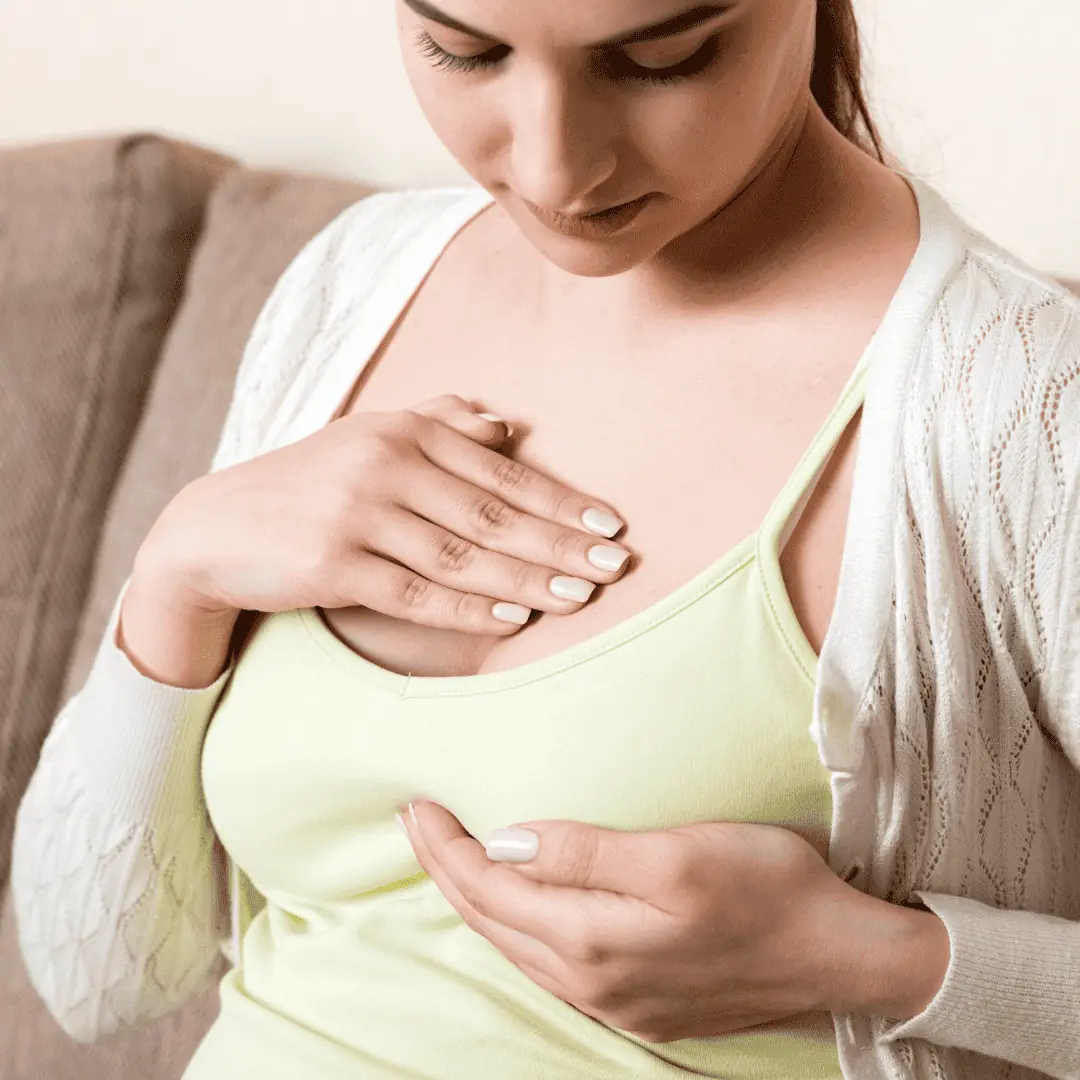Colostrum Harvesting: Why Some Moms Are Trying It
This post may contain affiliate links. As an Amazon Associate, I earn from qualifying purchases.
That is right! Colostrum harvesting exists! And some moms-to-be harvest their colostrum to give their baby an early start on the nutrients they need for healthy growth and development. And it may also improve your baby’s gut health days after birth.
I only discovered recently that colostrum harvesting was a thing and decided to carry out my own research. It is just what it sounds like. It is collecting colostrum from your breasts while you are still pregnant and then using it to feed your baby when he is born.
In recent years, moms have been influenced by this trend because they want to help build their babies’ immune systems as soon as possible. Or maybe concerned about their ability to feed their baby once born due to complications (such as C-section).
If you are a new mom, read the article to discover more about colostrum harvesting and why some moms are trying it.
What is Colostrum?
Colostrum is the early form of milk your body secretes right after you welcome your newborn baby.
Your breasts begin producing this ‘thick golden-yellow goodness’ when you are about 12 – 16 weeks pregnant. Some refer to it as a baby’s first immunization because it contains antibodies to protect them against disease and infection.
Apart from being a baby’s first source of nutrition, it also plays a unique role as a milk laxative. Allowing your baby to pass his first stool, which is called meconium.
Your baby will breastfeed on small amounts of colostrum that his tiny tummy can handle for about 3 days until your mature milk comes in about 10 – 14 days. Do not be anxious about whether the quantity of flow of colostrum you secrete will satisfy your baby. Breastfeeding works on a demand-and-supply basis: the more your baby feeds, the more you will produce breast milk for your little one.
RELATED READ: TOP 10 FOODS TO INCREASE MILK SUPPLY
What is Antenatal Colostrum Harvesting?
Antenatal colostrum harvesting involves expressing and storing colostrum in the final weeks of your pregnancy before your baby is born.
From when you are 12 – 16 weeks pregnant, your breasts produce colostrum until you give birth to your little one. You can express it by hand because it is typically too thick and the quantity too small to successfully pass through a breast pump. You can collect and store colostrum in small syringes (1ml, 2.5ml, or 5ml), which can be used directly to feed the baby once needed.
Before we talk about who antenatal colostrum harvesting is for, I need to say that as an expectant mom, you are not under any compulsion to harvest your colostrum. However, it is an option only if you are interested.
Why Do Some Moms Opt for Colostrum Harvesting?
If you are interested in harvesting your own colostrum, there are a few things you need to know.
First, you should start collecting colostrum close to your Expected Date of Delivery and as soon as possible after giving birth. The sooner you start harvesting, the more likely you will get a good quantity of stored milk.
Second, you will need to sterilize your equipment before each use. And third, store your colostrum in clean containers in the refrigerator.
Some medical conditions can sometimes make breastfeeding difficult for you and your baby. You may be encouraged to collect colostrum antenatally if you have:
Mom conditions that may require colostrum harvesting
- Being scheduled for an elective (planned) cesarean section.
- Pre-existing diabetes or developed diabetes in pregnancy (gestational diabetes).
- Underdeveloped milk-producing breast tissue is known as breast hypoplasia (uncommon)
- A previous breast surgery
- Taking certain medications during pregnancy for high blood pressure. Your doctor will advise if this applies to you.
- Having problems with breastfeeding after previous births.
- Giving birth to twins or other multiples.
Baby conditions that may also require colostrum harvesting
- A premature baby
- Being diagnosed with fetal cleft lip or palate
- A congenital condition such as Down Syndrome or cardiac complications
- Being admitted to the neonatal ward for a health condition
RELATED READ: HOW TO COMBINE BREASTFEEDING AND PUMPING
Is Colostrum Harvesting Safe?
Some expecting moms worry about expressing colostrum affecting their pregnancy. You can try colostrum harvesting from around 37 weeks of pregnancy onwards. The reason is that it relies on the production of the hormone oxytocin.
Although only small amounts of oxytocin are produced when you express colostrum, there is always the risk of causing contractions. This is why your baby must be well-grown before you start colostrum harvesting.
Please note that If you experience any cramping in your uterus, you should stop expressing and discuss your choice with your healthcare provider.
Who Should Avoid Colostrum Harvesting?
Colostrum harvesting is clearly not for every pregnant mom-to-be. Some pregnancy-related conditions increase the risk of premature labor, and it is important not to express colostrum if you:
- Are at risk of threatened and/or actual preterm labor
- Have a cervical suture (stitch) in place or been diagnosed with cervical incompetence
- Are taking drugs that may be harmful to your baby if it passes into your breast milk
- Have been diagnosed with a low-lying placenta, also known as placenta praevia
- Have experienced some bleeding during your pregnancy
- Do not have the means to store the expressed colostrum safely or hygienically
There may be other reasons you should not express colostrum before you have had your baby, so please discuss this with your midwife and obstetrician.
When to start collecting colostrum
You can harvest colostrum starting from 37 weeks. It is a great way to practice antenatal colostrum harvesting and store breast milk. It can also help you to boost your confidence as you prepare to breastfeed (particularly for first-time mothers).
You can get a colostrum harvesting kit that contains:
- 5x sterile syringes (these are used for collecting any colostrum you harvest, including handy caps for storage)
- 5x freezable labels (you can label them with your name and the date collected and store them in your freezer to take with you to the hospital when you give birth)
- 2x MORI bonding cloths
- A full guide to colostrum harvesting and a free No Harm Nipple Balm sample
- Access to our 60-minute live webinar, hosted virtually by our registered midwives. The webinar covers what colostrum is, shows you techniques for hand expressing, and provides you with information on how to collect and store colostrum.
How to Start Colostrum Harvesting?
Colostrum harvesting is a skill that requires some practice. So do not get discouraged if you struggle initially. You can always get help from a lactational professional, midwife, or doctor.
Antenatal expression is the best way of collecting colostrum. Colostrum harvesting with a pump is not recommended as most of this precious liquid will stick to it and be wasted.
- Wash your hands well with soap and water before you hand express.
- Sit in a comfortable position and gently massage your breasts, stroking from the back of your breast towards the nipple to encourage the let-down reflex.
- Put your thumb above the nipple and your first few fingers below the nipple. You will be cupping the breast in a C shape.
- Compress the breast tissue, hold briefly and then release. Try not to squeeze or pinch the nipple.
- Colostrum should start to arrive drop by drop. Collect the colostrum in either a sterile syringe or a clean container.
- Express each breast twice during each session. Between expressions, store the colostrum in the fridge. Label it with the date, cap the syringe, and put it in a plastic bag and into the freezer.
- Aim to hand express 2 to 3 times a day from around 37 weeks of pregnancy. Start gently and slowly, eventually building up to 3 to 5 minutes of expression on each breast twice each day.
Please note that expressing colostrum antenatally will not decrease or increase your milk supply after the baby is born.
RELATED READ: TIPS ABOUT BREASTFEEDING: A FULL GUIDE
Storing Your Harvested Colostrum at Home
Colostrum can be collected 2 – 3 times each day in the same syringe. You will need to store it in the fridge. Before storing your colostrum at home, label it properly with your name and the time of expression. This will make it easy to identify when it is time to transport it to the hospital.
When you are done expressing your colostrum for the day, place the syringe into a zip-lock bag before putting it into the fridge or freezer.
Temperature to store your colostrum safely at home
- Colostrum can be stored at room temperature for 6 hours.
- In the fridge for 3 – 5 days as long as it is kept in the back and not in the door. The temperature at the door is warmer than inside the fridge. Please ensure it is away from uncooked food like raw eggs and meat products.
- Frozen colostrum can last for up to 6 months in the freezer, but once it is defrosted, use it straight away and discard any remnants.
The Best Way of Transporting Your Harvested Colostrum
It is a good idea to mention your colostrum stores on your birth plan and make sure your care team is aware ahead of your decisions.
When it is time to transport your frozen colostrum, put it in an insulated cool bag and fill the space with ice packs, this will maintain the temperature. Defrosted colostrum should not be refrozen.
As soon as you arrive in the hospital, let your midwife know you have brought your colostrum with you, and they will put it in the fridge or freezer. Cross-check to make sure it is labeled correctly.
How Much Colostrum Should You Harvest for Your Baby?
You will likely only be able to harvest tiny quantities of colostrum milk, particularly the first few times. But any amount is beneficial, so try not to worry about how much you produce.
It can feel hard to believe and trust that our bodies will have and make enough milk for our babies. But the evidence clearly shows that most women produce more than is needed, including mothers of twins or triplets. So harvest as much colostrum as you feel able to collect. Otherwise, keep in that that you really don’t need to harvest any!
Conclusion
There are a few things to consider before trying colostrum harvesting, but ultimately the decision is up to you, mom.
Remember, antenatal colostrum harvesting is best in your 3rd trimester and is generally considered safe. Check with your midwife or obstetrician if you are at risk of preterm labor. Because the hormones stimulated while colostrum harvesting could cause uterine contractions.
Mommas! Knowing you have stored colostrum in case of an emergency can provide peace of mind! So that you can go ahead and enjoy your breastfeeding journey.
Have you tried colostrum harvesting before? Or are you like me, who just discovered it? I would love to hear from you.
Check out our other breastfeeding resources below:







